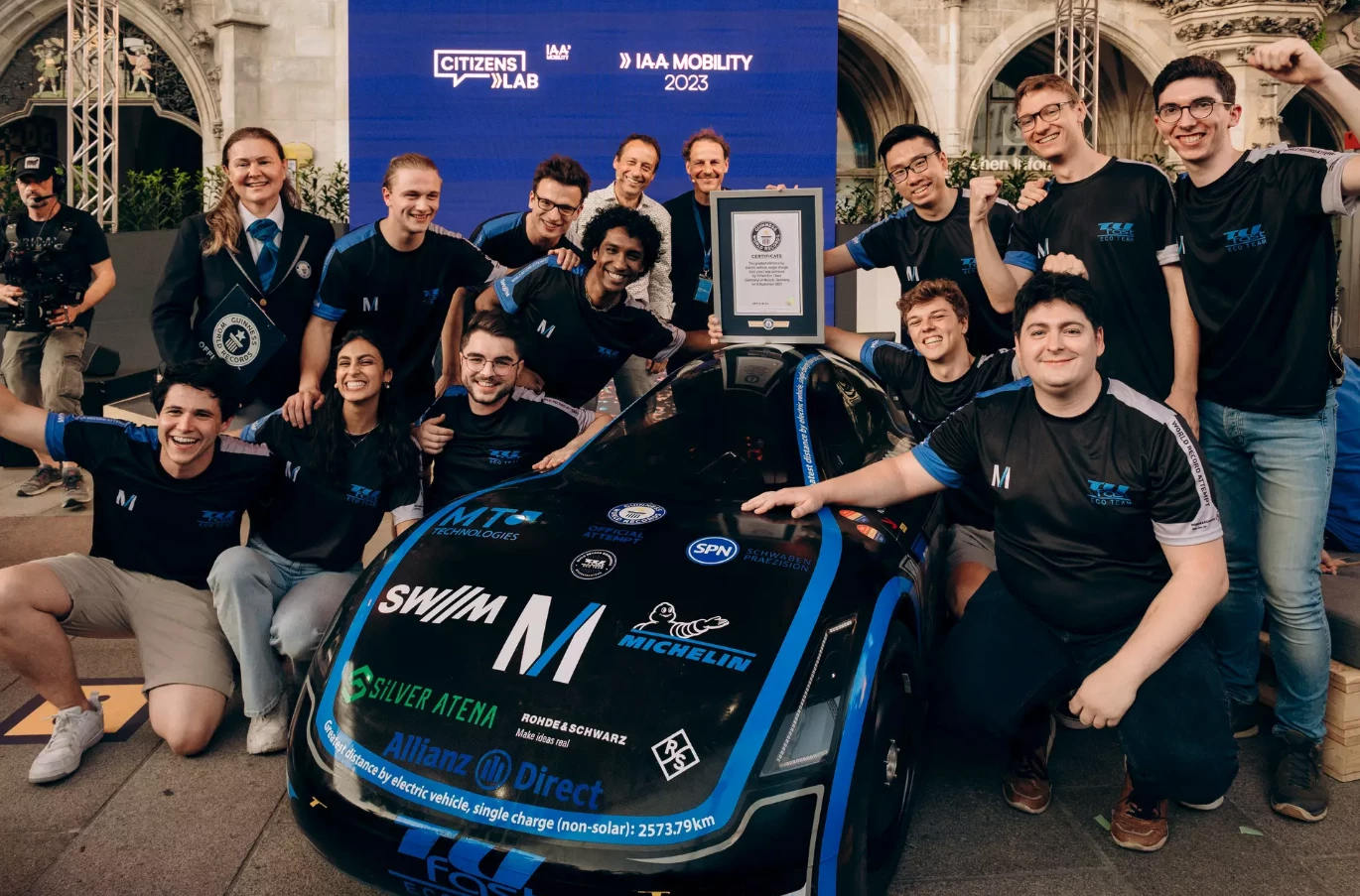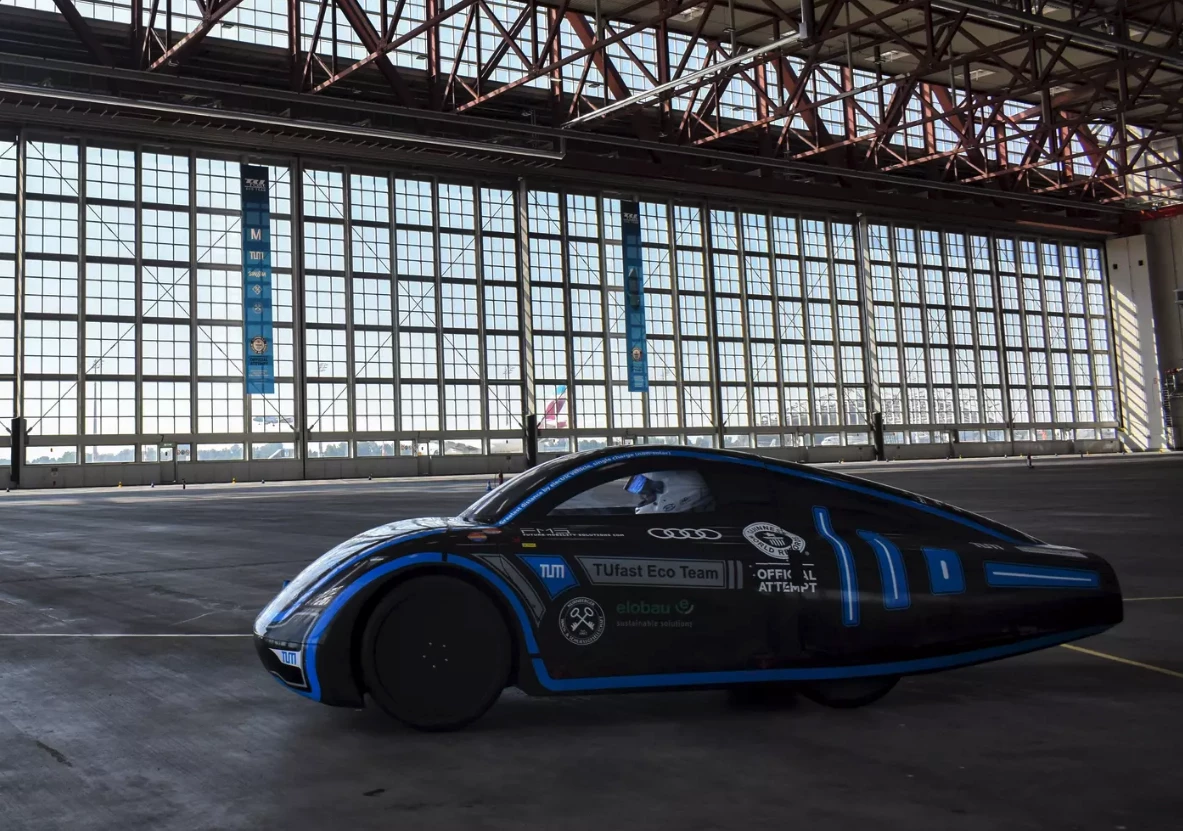A team of students from Technical University of Munich (TUM) has set a new official bar for the longest-range electric vehicle (non-solar), and it's several times higher than the Lucid Air's 500-mile+ production car benchmarks. The team's aero-sculpted single-seat Muc022 was able to travel 2,573.79 kilometers (1,599.28 miles) on just one charge of a 15.5-kWh battery a fraction the size of the batteries fit to the longest-range production cars.
You don't generally drive 1,600 miles in a day, especially when you're trying to hyper-mile your way into the Guinness Book of World Records by beating an existing single-charge range record of 1,608.54 kilometers (999.5 miles). Instead, the TUM team that calls itself TUfast Eco took six days during last week's IAA Munich Mobility show to perform its record attempt. They drove the car in an airplane hangar provided by Munich Airport to eliminate weather variables across the near-weeklong attempt.
Not only did the TUfast Eco team arguably become the first to break 1,000 miles (depending how strict you want to be in decimal-placing that last record), they beat the previous record, set by American company IT Asset Partners in California in 2017, by an impressive 60 percent. They tied the record in four days and spent the last two raising the benchmark as high as they could while draining the battery to empty.

The Munich team drove that distance using just 15.5 kilowatt-hours of battery power, a capacity more comparable to that of a production plug-in hybrid than the 100-kWh+ packs common for market-leading all-electrics like the Lucid Air Grand Touring and Tesla Model S. That breaks down to roughly 0.6 kWh per 100 km, which TUM contrasts to an efficient production EV's consumption of 13 kWh per 100 km.
Of course, you won't be driving the Muc022 to pick up the kids from school or grab groceries for dinner. As its number indicates, the single-person vehicle was developed last year, specifically for competition. It was replaced by the Muc023 in March ahead of the 2023 Shell Eco Marathon, so the TUfast team repurposed the 2022 car for the range record and swapped in the larger 15.5-kWh battery pack for the task.
The Muc022's tapered, teardrop-like body achieves a 0.159 drag coefficient that's lower than any vehicle on the market, including the 0.175-Cd Lightyear 0 solar-electric car. It weighs in at a mere 375 lb (170 kg) without the driver, minimizing the mass-motivating demand put on its small 400-W permanent magnet synchronous motor.
Source: TUM




